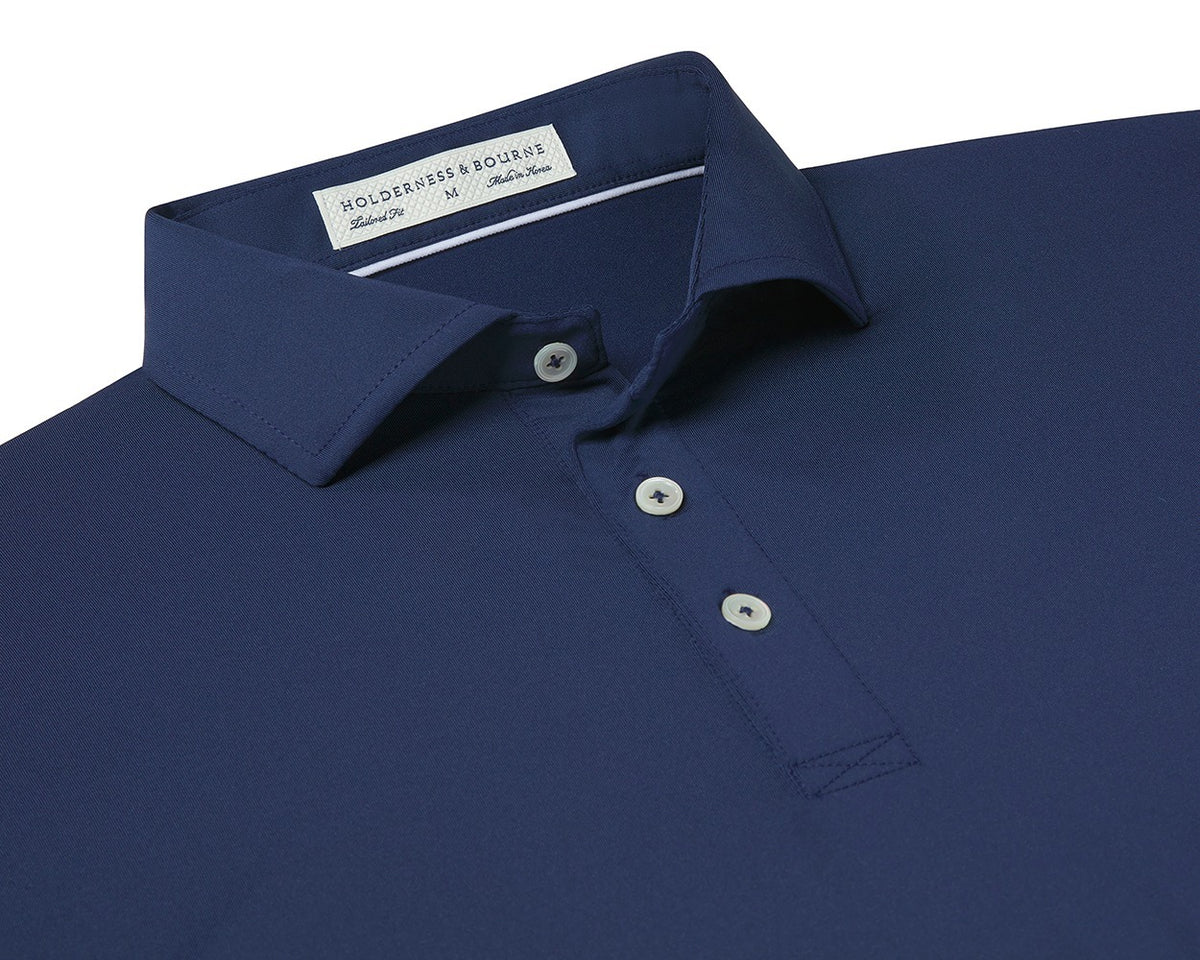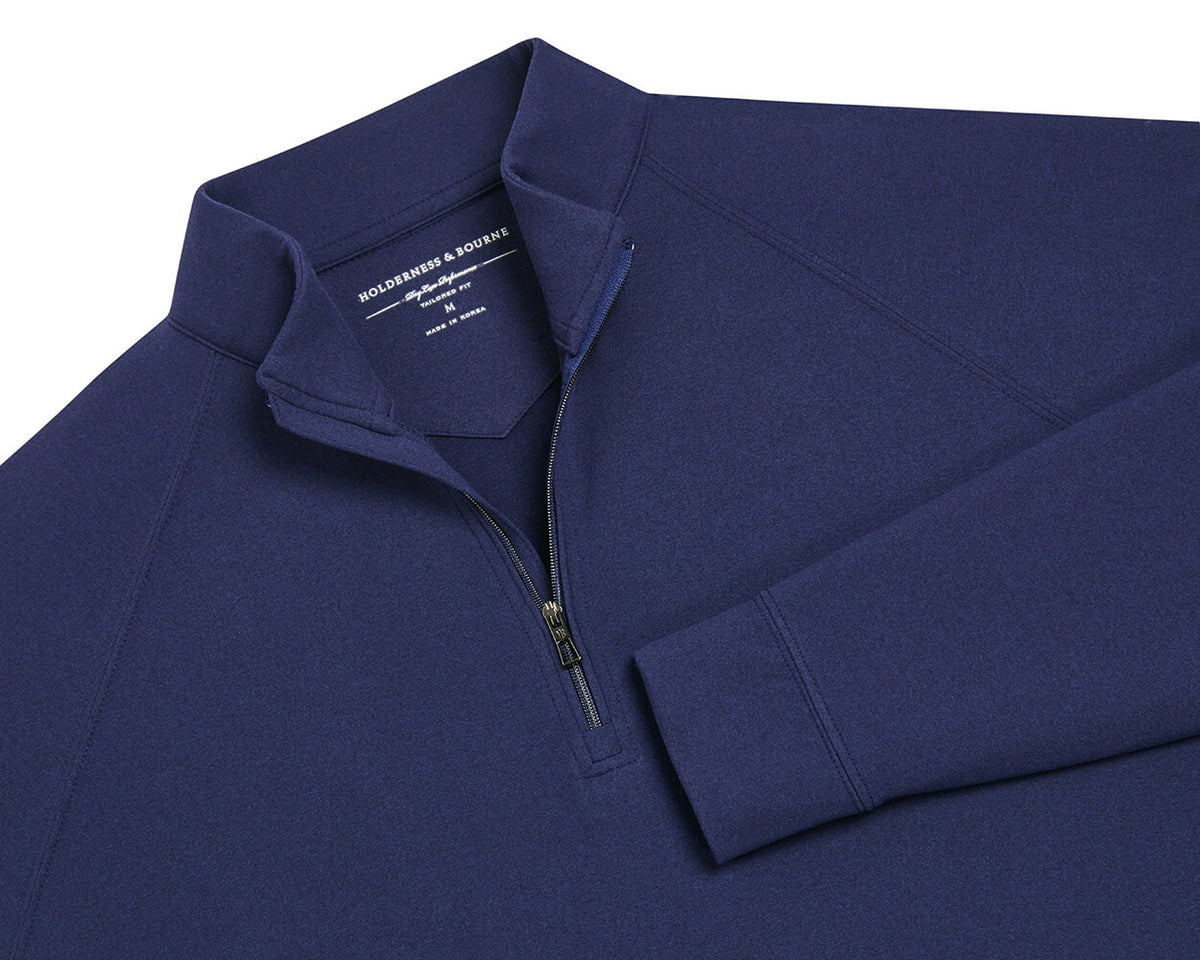We met up with friend of the brand and golf course shaper/designer Kye Goalby to learn a little more about his background, previous projects and what he’s been up to recently
Kye, thanks for being with us today. Can you give us a quick intro?
Great to be here. I’m Kye Goalby. I have my company Goalby Golf Design and I’ve been working in the golf design business and golf building business since basically 1990, so 35 years. How I got into the golf design business was a little bit of lucky how I was born. My dad was Bob Goalby, who was a tour professional for basically his whole life, never really had a job—he got to play golf his whole life. He won the Masters in 1968. So I grew up in Belleville, Illinois, and I lived maybe five houses from the Haas’. So Jay Haas played golf on the tour for many years, and his brother Jerry Haas was the same age as me, and Jerry and I both went to Wake Forest and played golf.

What was one of your first projects?
So out of college, I didn’t want anything to do with golf. I had had enough, and I went to work in Boston in the financial business for a few years and realized that that wasn’t my calling either. I lucked into doing a golf course project with my dad in Belleville, Illinois in 1990, and that just sort of snowballed into today. After the project in Southern Illinois with my father, I did a few more projects in this area and I reached out to Tom Doak, and Tom was a rather unknown young golf architect at the time. I was fortunate to get connected with Tom and work on a few jobs. I worked at Apache Stronghold Golf Club in 1997, and then after Apache Stronghold, worked at the Valley Club of Montecito with him on a renovation, and then Atlantic City Country Club, and also actually Pasatiempo Golf Club in California.
What did you learn most from your time building with Tom Doak?
One of the big learning experiences for me on the new projects with Tom was really how he uses the land and the freedom he gave us to really just build cool golf and not have any rules or restrictions and just build something as cool as you, anything you can come up with, go for it. The freedom to really trust yourself and just be bold and build cool golf, and utilize the land that’s there, which Tom was great at, putting green sites, like wow, that’s kind of a wild spot to put a green, but it was really cool. So I learned a lot with that, and also sort of picked up what still is probably, my wife might say it’s my flaw, but just loving to be on site on a project the whole time. And that freedom to get the details right and be creative was really one of the foundations of probably my career today.
Can you give us some detail on your time in New Zealand at Tara Iti. That must have been special!
It was truly special. I worked with Tom on Tara Iti in New Zealand, which was right after a project I did of my own in Japan, a renovation, so getting to travel quite a bit in the Pacific area. And working at Tara Iti was probably one of my favorite jobs ever, I got to spend two years down there, we did nine holes at a time, and just spending time in New Zealand was amazing. And the site for Tara Iti, a lot of people have probably seen pictures of it, I don’t know how many people have been down there to see it and play, but it was an amazing site, it had been covered in pine trees, and we cleared all the trees off of it to create basically a dunescape golf course.
You have also worked with Gil Hanse on some of his more recent projects right?
Being able to work on cool golf courses was always more important to me than my own ego or putting my name on a golf course, and being able to work somewhere like Tara Iti or Ballyneal [Golf and Hunt Club] or the Valley Club was much more interesting to me than working, building a green somewhere that had my name on it. And with that in mind, I had some opportunities to work with Gil Hanse, and that was at Oakland Hills [Country Club], well actually the first job was at the Creek Club in New York, and I loved that golf course and having an opportunity to go work there was like, heck yeah. And so doing a renovation there was awesome, and a few years later I worked with Gil renovating Oakland Hills, and that was really cool to me. My dad finished second in the U.S. Open there in 1961, and when I told him I was going to work on that golf course, he was like, just blow up that damn 9th green, because if you’re familiar with Oakland Hills, 9th is a 240-yard par 3, I think it was 240 yards in 1961, and the green’s pretty crazy. He said he hit the green all four days and three-putted that green and lost by one, and I didn’t really know much about it going in there, but I did see that when Ben Hogan won, when he defeated the monster, he actually hit it short of that green every time and chipped up and made par every time. So maybe my dad could have learned something from Hogan, he might have won the U.S. Open, and my brothers and I kind of joked, if he would have won the U.S. Open, that was three years before I was born, I might not be here right now. So maybe it’s good that he didn’t. But working on that with Gil was awesome, and a year after that, worked with him, just a few years ago actually, at Oakmont, where they’re playing the U.S. Open this year. So we spent a year at Oakmont just revitalizing the golf course and restoring, it more or less.
The Tree Farm has your name on it. How was that experience?
So earlier, I had mentioned that I didn’t really have any ego and wanted to have my name on things, but an opportunity kind of came up after Oakland Hills with Gil, where I met Zach Blair at Ohoopee [Match] Club. We played golf together down there, and at the time, he was transitioning in this project that became the Tree Farm, and Zach ended up, I don’t know, we hit it off. And so Zach ended up hiring me to do the Tree Farm with him, and I spent I think 14 months on site there, working on that golf course, literally there every day, and I think it turned out pretty cool.
Let’s talk Montana. Can you give us some color on that project?
So after the Tree Farm, I had an opportunity with the two guys that really were my main guys at Tree Farm that helped me, Eamon Sullivan and Matt Smallwood. We had an opportunity to do a new project in Montana on a guy named Buzz Warner’s ranch, and that’s been a real challenge. And we worked there last year, and we’re going to work there again this year. We did nine holes last year, we’ll do nine holes this year. Just the window is very small to grow grass, to seed grass there, so you can only do nine holes at a time. After working at places like Ballyneal, Tara Iti, and even Tree Farm, where it’s basically all sand, we’re working out in Montana, where it’s basically rock.
Going back to what I mentioned with Tom about taking advantage of the natural site, really had to route the golf course in a way that we didn’t move dirt, found green sites where we didn’t have to do much, and we’re able to sort of use what might be a challenge to turn it into something more interesting. We’re not building sand bunkers there, so we’re not spending a lot of money, but we’re creating bunkers that look like something that you might see in the UK, where bunkers have sort of been abandoned. And they look like there was a bunker there, but it’s just grass. And we’re building some interesting things like that, building little mounds, taking our rocks and dumping them into piles and dumping dirt on it, sort of like Donald Ross did in New England in 1920, and really just using what we have to make something interesting.
The ranch is adjacent to the Big Hole River, which is, I’m not real knowledgeable about all this, but I’ve been told it’s one of the last freestone rivers in Montana, which means it doesn’t have a dam on it, and so it’s just wild and natural. The golf course is not on the river. We tried to keep it away from the river to be respectful of the trout fishermen and just keep the golf away from the river, but you’re on a bluff on a few of the holes overlooking the river, and there’s an old schoolhouse actually at the turn, it’s the halfway house, it’s really cool. It’s an old schoolhouse that Charles Kuralt, who used to work for CBS and was On the Road with CBS, that’s where he built it, or he brought the schoolhouse there and put it there, so we use it as a halfway house.

Where did you first come across H&B?
So I think the first time I was aware of the Holderness & Bourne brand was in Tara Iti, and one of the cool things about it is working at a place recently like Oakmont where we need to wear golf gear while working on the dozer, can wear a Holderness & Bourne polo, but where I am now in Montana, I can wear a hoodie these days.
What does the next decade look like for you?
The next 10 years, I’m hoping that I can get a few more opportunities like I’ve had at Tree Farm or currently in Montana, where I can actually spend a ton of time on site and just try to do one project and do it really well and focus on the details of that one job. Sometimes in the past I’ve worked where I’ve done two or three jobs at a time, and while some guys are really good at it, I’m much better at staying focused on one thing, and I really hope to just get a few more opportunities to do that.
Lastly, what is the most gratifying part of your job?
I think the most gratifying thing that comes from building golf courses for me is being on the bulldozer building greens. Just I could lose myself for three, four hours, not even realizing a minute went by, trying to think of all the little details that you’re trying to get into a green, the little shapes, thinking about the shots coming in, thinking about the chips that might occur if you miss the green, thinking about how to stick a bunker here that might get in your head and try to bail from the bunker and miss the green here and what happens, and even just how you might putt it two different ways. You might be able to putt at the hole directly or up a slope and come back, so I think that’s probably the most gratifying element, and really just doing that in cool places like Tara Iti or Ballyneal or at the Tree Farm and just beautiful natural sites is really the greatest part of it.











